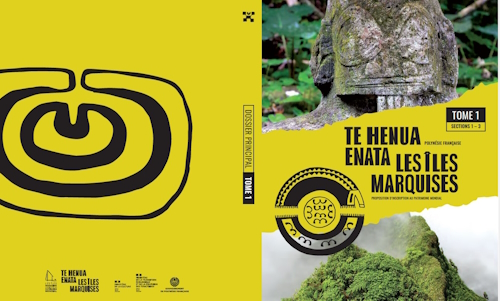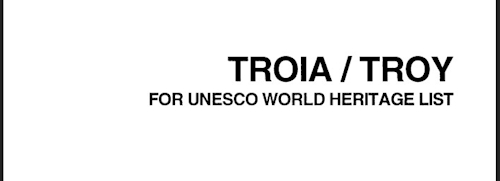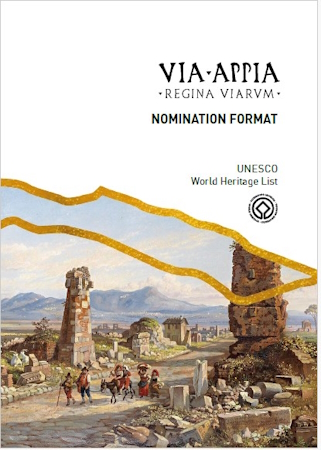Blog WHS website
Nomination Dossiers
While preparing for my upcoming Kenya trip, I was studying the Arabuko-Sokoke Forest (part of the Coastal Forests of Kenya TWHS). It turns out that they are looking towards a nomination, but estimate that they would need 100k-300k USD to complete it (and subsequently wondered how they would get access to so much money). The nomination dossiers have also been addressed in the WHC 2025 documents that were published this week, where a change of the format is considered for a myriad of reasons, including "to promote possibly shorter and less costly nomination dossiers".
Maybe it’s time to have a closer look at those Nomination Dossiers (I wrote about Incomplete Dossiers before).

History of the Nomination Dossier
The nomination dossier, as we now know it as an extensive glossy brochure, came into existence in 1998. After the first years of WHS, an overall need to get a grip on several aspects of the nomination process grew. In 1996, a fixed format for nominations was decided upon. That format is mostly still in use, although more specific questions are now being asked about risk preparedness, indigenous peoples, financial resources, etc.
When we look at a few examples of nomination dossiers from the first year, 1998, Semmering sent in 62 pages, Woudagemaal 31, Troy only 12, East Rennell 48, and the Flemish Beguinages 42. Comparing those with those of the successful nominations of 2024, there has indeed been a significant growth in the size of the documents. The number of pages (excluding annexes, maps, management plans) varied from 103 (the emergency nomination of Tell Um Amer) to 751 (Via Appia) and 759 (Marquesas Islands). The average is 286.
The current guidelines found here do expect a dossier to include the following, which sets an expectation for a considerable length:
- Description of the property: "should not exceed 16,000 words (about 50 A4 pages) for a single site nomination or 24,000 words (about 75 A4 pages) for a serial site nomination"
- History and Development: "should not exceed 6,400 words (about 20 A4 pages)"
However, the Operational Guidelines state as well that “Nomination dossiers to the World Heritage List are evaluated on content rather than on appearance of the dossier or the quantity of annexes”.

The cost of a Nomination
The aforementioned 100k-300k USD to complete the nomination of Arabuko-Sokoke Forest probably isn’t only meant for direct costs such as writing the dossier and associated costs such as all the meetings, hiring a professional photographer, map maker etc. There are also costs to upgrade the site and its management to meet the requirements to become a WHS.
A few examples from recent inscriptions seem to confirm that the Kenya estimate isn’t unrealistic. I found the following budget indications (publicized before nomination, so the actual costs may have been higher):
- Eisinga Planetarium in Franeker, a small building that was already well-protected: about 100k EUR (paid 50/50 by city and province).
- Schwerin: 1.2 million EUR (450k from the city, 750k from donations).
- Anticosti Island: $600,000 CAD (= 384k EUR).
- Grand Pré: estimated at $1.3 million CAD (= 832k EUR)
And for upcoming nominations:
- Via Francigena (serial, within Italy): 1.1 million EUR from the Ministry of Culture.
- The Australian government committed $1.2 million (AUD) (686k EUR) to support the Broken Hill and Victorian Trades Halls, part of a larger transnational nomination of Workers' Assembly Halls.
- For the Okefenokee Swamp in the US, an estimated $500,000 USD was raised from private donations and foundations to prepare the UNESCO nomination document, a process that takes three or more years.
Furthermore, the nomination is sometimes taken as an “excuse” to beautify the site, to make improvements that are not necessary to get an inscription. A great example of the latter is Anticosti, where “the province also invested $7.2 million (CAD) to expand visitor accommodations and the municipality is spending $1 million (CAD) on a hiking and cycling trail. The province's decision to end oil and gas exploration on the island, in part to support the bid, also resulted in compensation payments to oil and gas companies, totaling approximately $62 million (CAD).”

The issue with extensive Nomination Dossiers
Back to the Nomination Dossiers: What are the issues?
- Current WHS prospects are held up to standards that the older ones have never been and never will be.
- The high expectations on content and size of the dossiers favor the richer countries.
- They take time from everybody who claims to be overburdened anyway.
- The longer the text, the more false claims and errors will creep in.
Maybe it’s best to go back to the basics and only ask for what is really needed: a simple form, a Draft Statement of Outstanding Universal Value, a clear map; those three items could do the scoping of the potential WHS. Plus some appendices, such as the applicable law that regulates its protection. In the end, the dossiers aren't presenting new scientific results, they’re just reiterating facts that are well-known to the reviewers. And do you write things like Management Plans only for the bid and then leave them in a drawer?
Personally, I only skim the Nomination Dossiers when looking for a specific piece of information. And I remember the one of Qhapaq Nan, which file is so large and the format so unclear that it is hardly usable. Do you ever read a Nomination Dossier? If so, is there one that stood out positively?
Els - 1 June 2025
Comments
Astraftis 4 June 2025
Sometimes I look for the dossiers, especially when curiousity strikes: they are kinds of monographs, if you want, and I like moographs.
I have read only one thouroghly, from thefirst to the last page, though: the dossier for evaporitic carsts in Emilia-Romagna. I think it explained a lot and I ended up wiser after reading it, but I also found it quite dry and with many repetitions. This is an effect I see from being composed bymany different parts, and probably written by a group of people.
I agree that some more concise format would be beneficial for everybody, but I'd still expect something in the order of a masters' thesis. For sure a lot could be delegated to a rich and commented bibliography.
Carlo Sarion 1 June 2025
Ah, this is such a good read Els.
I do read nomination dossiers when I am bored or preparing a trip. A couple of nomination dossiers that I could think of at the moment that I found well-prepared. This is primarily based on a few things: (1) effective in communicating the site's OUV and could convey technical concepts well; (2) written in plain English [definitely no to verbose and euphuistic style of writing for me]; and (3) provides good photos and clear maps.
1. Eise Eisinga Planetarium - the photos(1) and how concise the explanations are
2. 20th century architecture of Frank Lloyd Wright - well-organised methinks
3. Pimachiowin Aki - I thought this one was effective at relating the perspectives and worldview of Anishinaabe First Nations.
I will have a look at others again to add a couple more to the list.
It may also be an interesting discussion to talk about maps that accompany the dossiers. In this day and age of cartographical advancement you'd expect state parties would be able to provide clear and well-rendered maps. But of course, it is very much still a matter of resources and funding.